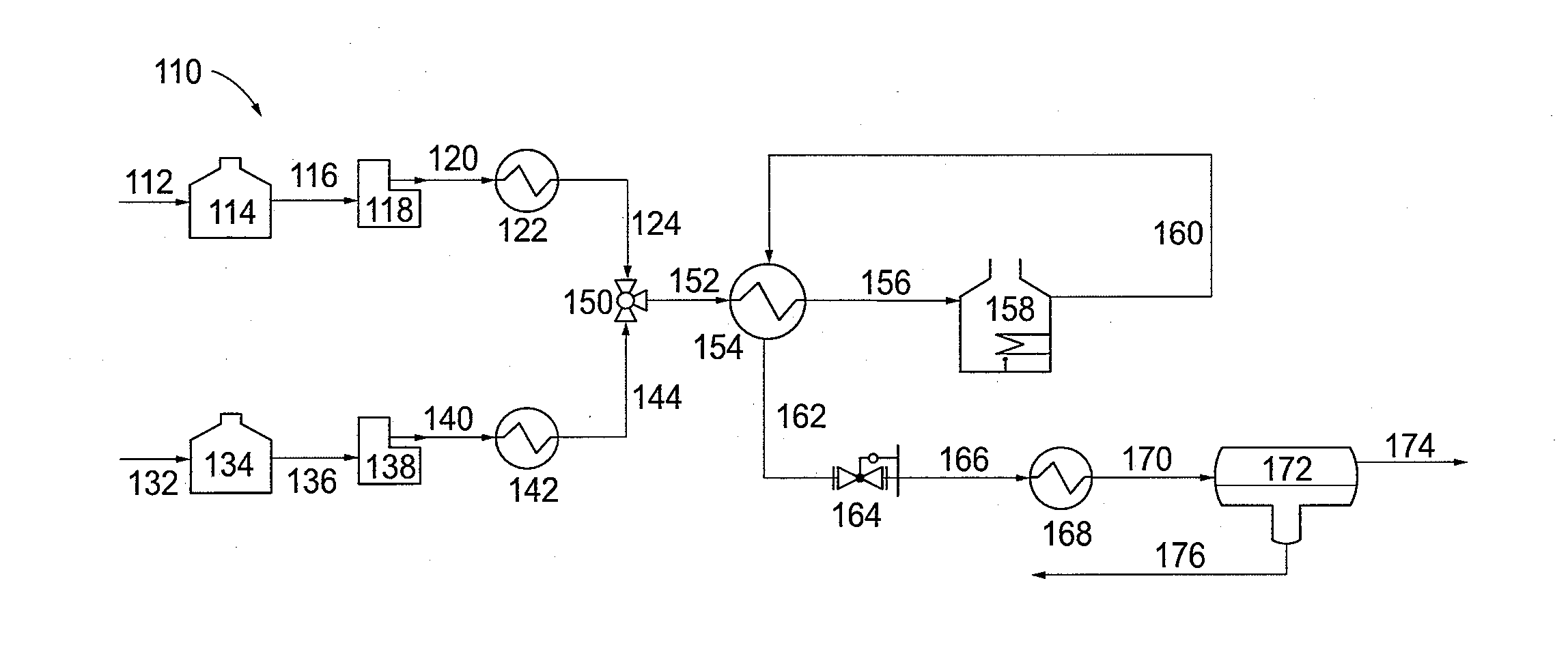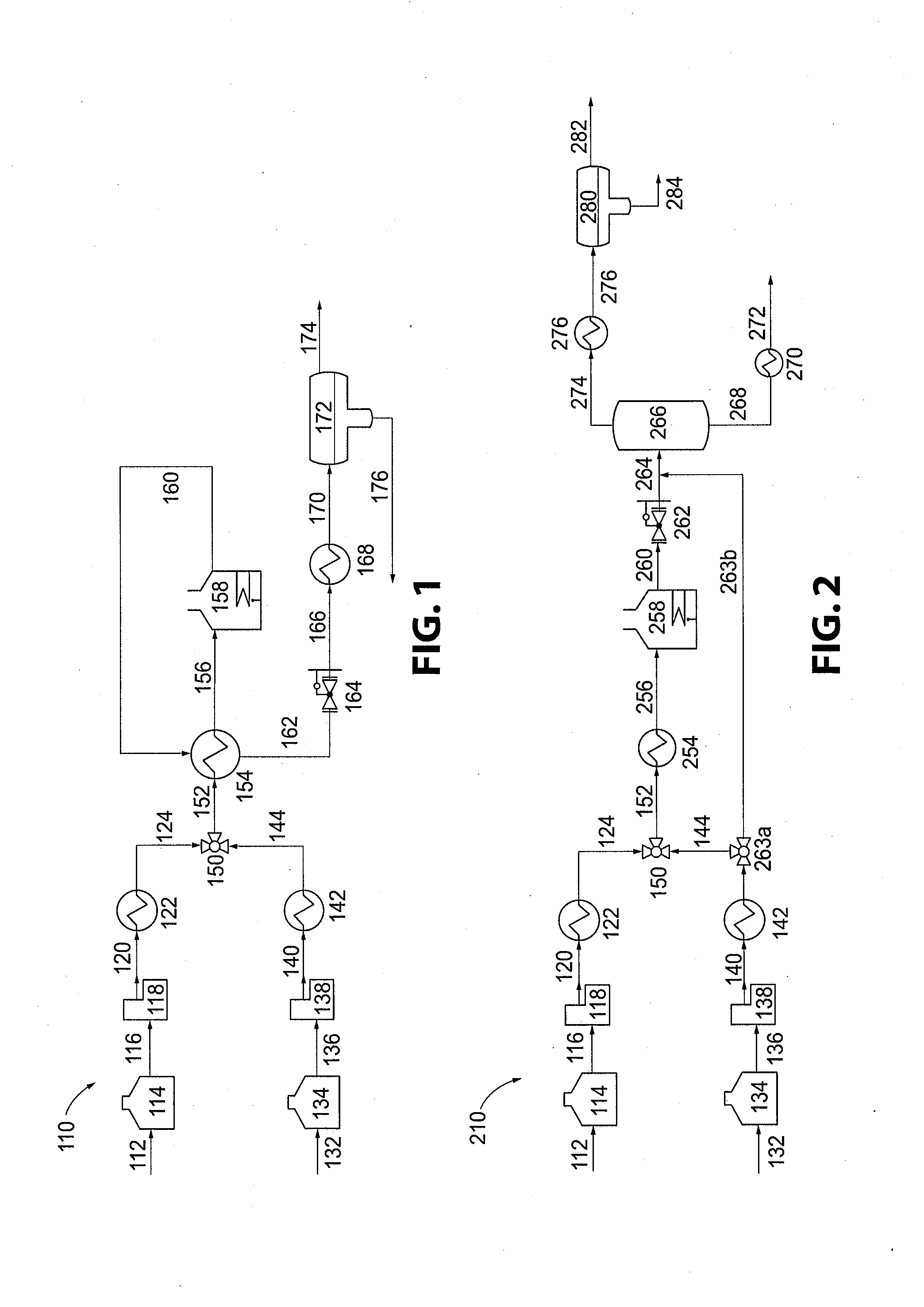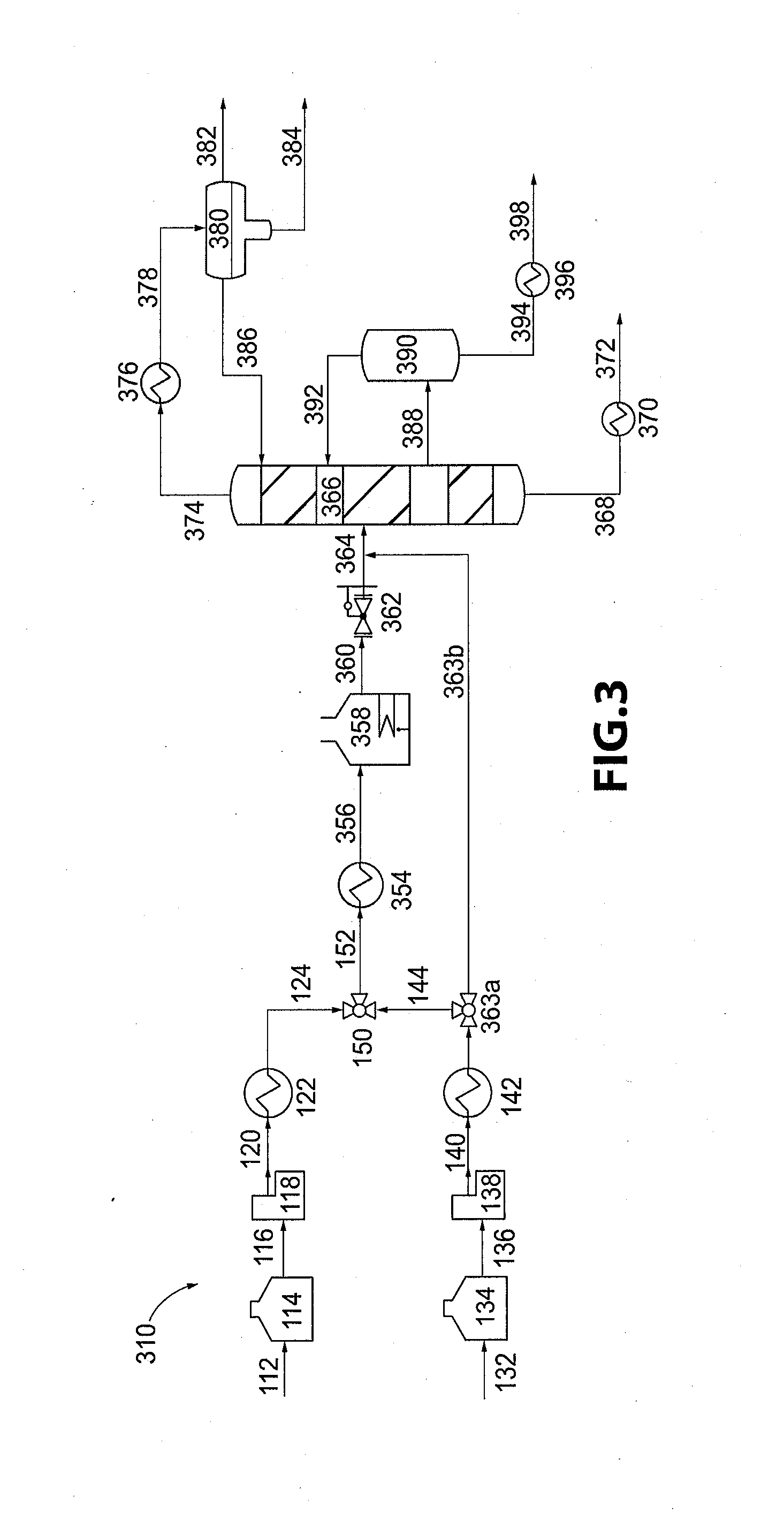Hydrothermal Cleanup Process
a technology of water and water, applied in the direction of liquid solution solvent extraction, separation process, water treatment, etc., can solve the problems of rapid desalting and rapid separation of water and organic phases with or without demulsification, and achieve the effects of reducing concentration, high product yield, and small footprin
- Summary
- Abstract
- Description
- Claims
- Application Information
AI Technical Summary
Benefits of technology
Problems solved by technology
Method used
Image
Examples
example 1
HCU Rapid Hydrolysis
[0046]Unrefined soybean oil was used as the feedstock to a pilot scale HCU system configured as shown in FIG. 1 to conduct rapid hydrolysis at temperatures greater than 290° C. without glycerin decomposition. Actual operating conditions are provided in Table 1 with reactor temperature of 340° C. and reactor pressure controlled at 2,500 psig to maintain the reaction mixture in the liquid phase. At these conditions, the triglyceride feedstock, water, and products of hydrolysis (glycerin and free fatty acids) are miscible. The very short residence time in liquid phase, and relatively low concentration of glycerin, resulted in near complete hydrolysis and inhibited glycerin decomposition. Upon cooling via the feed-effluent heat exchanger and product cooler, an organic phase containing FFAs and an aqueous phase containing glycerin and water were separated in an oil-water separator.
TABLE 1HCU Operating Conditions for Rapid HydrolysisParameterValueSoybean oil flow rate,...
example 2
Hydrothermal Cleanup of Yellow and Brown Grease
[0049]A pilot HCU system was configured as shown in FIG. 2. The vapor-liquid separation system was a flash drum modified with internal packing to aid in demisting the vapor product. No external reflux was provided for rectification of the overhead product. The feedstock consisted of a 60:40 blend of yellow grease (YG) and brown grease (BG). The brown grease acquired for this example had been dewatered and filtered. The feedstocks were desalted using a simple water wash and blended before processing by HCU. A summary of HCU operating conditions for this example is provided in Table 3.
TABLE 3Summary of HCU Operating Conditions for Waste Oil CleanupParameterValue60:40 YG:BG flow rate, mL / min135Specific gravity of 60:40 YG:BG blend, g / cc0.948Water flow rate, mL / min135Total flow rate, mL / min270Water fraction of total feed, vol %50Reactor temperature, ° C.450Reactor pressure, psig500Superficial residence time, sec120Actual hydraulic residence...
example 3
Phospholipid Cleanup
[0052]A feedstock that is high in phospholipid content and other inorganic contaminants was processed. This feedstock was comprised of partially refined microbial oils and plant oils that contained a broad mixture of lipid types including triglycerides, phospholipids, alcohols, and long chain waxy esters. At HCU operating conditions, phospholipid molecules and triglycerides are rapidly hydrolyzed as demonstrated in Example 1. Phosphorus from the phospholipids is mostly liberated as phosphate ion (PO43−).
[0053]In this example rapid hydrolysis was performed in the HCU system configured as shown in FIG. 1. The HCU reactor was controlled at 2,500 psig and 340° C. to maintain the reaction mixture in the liquid phase. Table 5 provides a summary of the operating conditions. At these conditions, the feedstock, water, and products of hydrolysis (glycerin, FFAs, and inorganics) are miscible. Upon cooling via a feed-effluent heat exchanger and cooling heat exchanger, an org...
PUM
 Login to View More
Login to View More Abstract
Description
Claims
Application Information
 Login to View More
Login to View More - R&D
- Intellectual Property
- Life Sciences
- Materials
- Tech Scout
- Unparalleled Data Quality
- Higher Quality Content
- 60% Fewer Hallucinations
Browse by: Latest US Patents, China's latest patents, Technical Efficacy Thesaurus, Application Domain, Technology Topic, Popular Technical Reports.
© 2025 PatSnap. All rights reserved.Legal|Privacy policy|Modern Slavery Act Transparency Statement|Sitemap|About US| Contact US: help@patsnap.com



